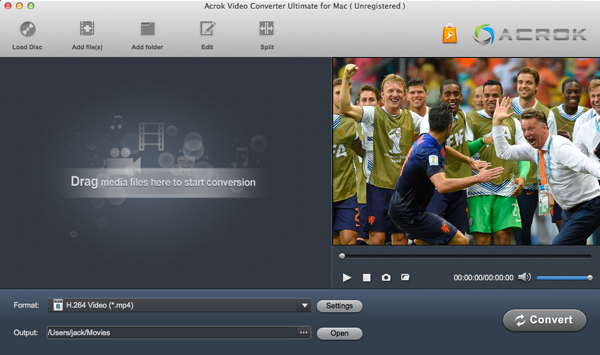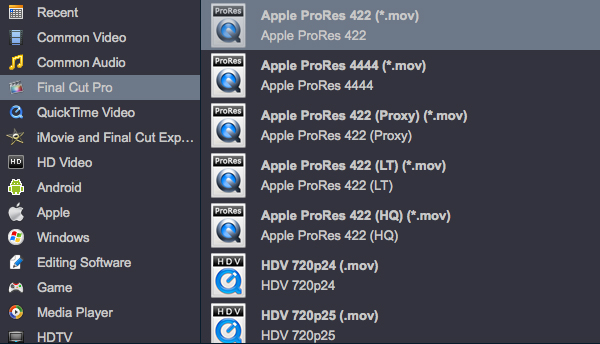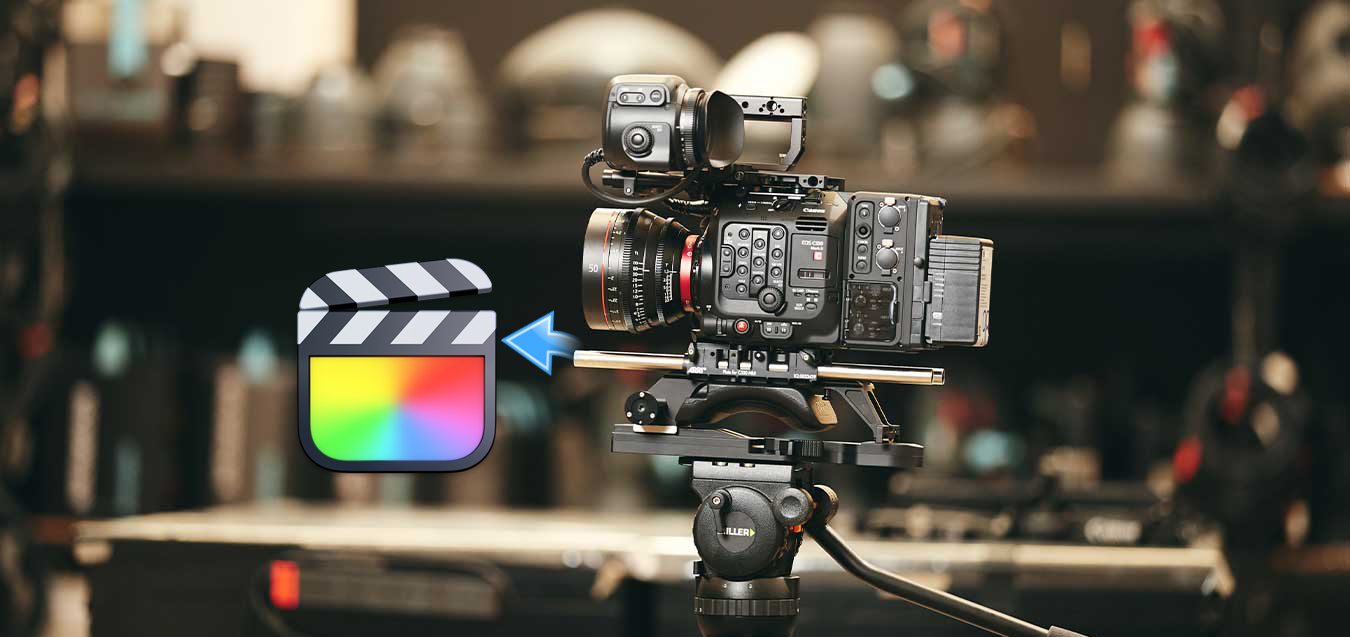The Canon EOS C500 Mark II 5.9K Full-Frame is part of the Cinema EOS lineup of cameras, and it features a full-frame CMOS sensor with an effective 18.69MP resolution. The camera internally records raw using the Canon Cinema RAW Light codec in 12- or 10-bit, or you can capture using the XF-AVC codec in 10-bit. XF-AVC is a H.264/AVC encoding wrapped in MXF files. XF-AVC realizes a high data-compression rate without sacrificing image quality, it supports the efficient recording on memory cards of high-image-quality 4K, 2K and HD video content captured on video camcorders.
There’s no denying that Final Cut Pro can do everything the professional video editor needs. However, when you import Canon EOS C500 Mark II files into Final Cut Pro, you may come across lots of problems, such as nothing shows up on the screen, or there is only image or you only get sound in Final Cut Pro. Well, according to Apple, Apple ProRes MOV is the best editing format for Final Cut Pro. Since Canon EOS C500 Mark II MXF is not supported by Final Cut Pro well, in order to edit MXF videos in Final Cut Pro, you need to convert EOS C500 Mark II videos to Final Cut Pro compatible format on Mac first before transferring the files to Final Cut Pro.
If you’re interested in how to edit with Canon EOS C500 Mark II MXF file, there’s a simple answer. The trick for how to import MXF files into Final Cut Pro, is to convert the Canon EOS C500 Mark II recordings to an editing-friendly codec first.
To do this, you can adopt Acrok Video Converter Ultimate for Mac (Best MXF to FCP Converter) for help. This program makes an easy work of converting Final Cut Pro incompatible media files including but not limited to MXF, MP4, MKV, VOB, FLV, etc. to a format such as MOV, H.265 or high-quality codecs like Apple ProRes and DNxHD. These formats can be well compatible with Final Cut Pro (X, 7, 6), Vegas Pro, Premiere Pro and any other NLE.
Codec correction (or conversion) is just the tip of the iceberg that it can handle. In terms of the compute-intensive Canon EOS C500 Mark II files, it’s also a decent performer, letting you downscale 5.9K to 4K and 1080P, lower 60FPS to 30FPS, adjust bit rate, etc. to better suit your computer hardware configurations and to ensure a smooth file importing and later editing with any NLE. What’s more, you can do some simple cutting, trimming and merging before converting Canon EOS C500 Mark II video. This is very convenient for those who just want to import a tiny snippet of a .mxf file into Final Cut Pro and avoid converting the whole file.
If you’re interested in ripping backing up your 4K and 1080P Blu-ray collection and don’t want to be held back by time restrictions output quality and speed, Acrok Video Converter Ultimate for Mac is the best tool I’ve tried that can combine these together. You can easily handle discs that are encrypted, region-locked or even unplayable. You can read best Blu-ray ripping software reviews here.
Download and get best MXF to Final Cut Pro Converter
How to Convert Canon EOS C500 Mark II MXF to ProRes MOV on Mac?
Step 1. Load original MXF files
Drag MXF files to the program directly. Or go to the “Add File” menu to locate the Canon EOS C500 Mark II files you want to add. You can add several files to do batch conversion.

Step 2. Select the output format
Click the format bar or the pull down menu of “Format” to select output format – Final Cut Pro > Apple ProRes 422 (*.mov) or Apple ProRes 4444 (*.mov) for Final Cut Pro editing easily.

Tip: In the Canon EOS C500 Mark II video converter, click “Settings” button if you’d like to customize advanced audio and video parameters like Video Codec, aspect ratio, bit rate, frame rate, Audio codec, sample rate, audio channels. Note: If you want to get original resolution, just keep the video size as original.
Step 3. Start MXF to ProRes MOV conversion on Mac
Click the “Convert” button to start the Canon EOS C500 Mark II footage to Final Cut Pro supported video format and codec conversion.
Hardware acceleration can be enabled to speed up the processing, only if your computer has supported graphics cards. Once done, you can easily import the encoded Canon EOS C500 Mark II file to Final Cut Pro without any trouble.




No responses yet